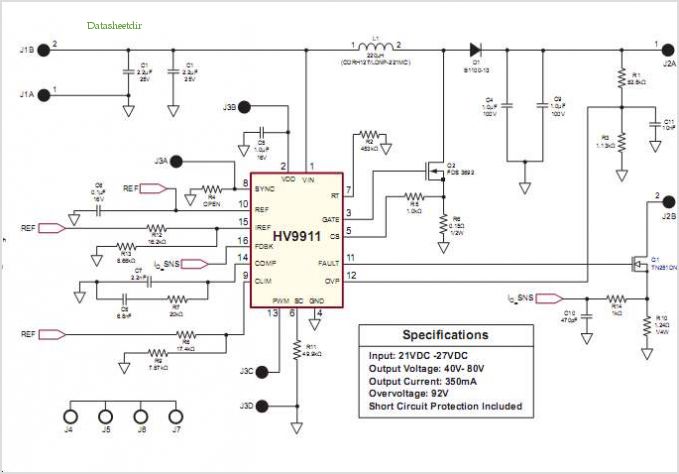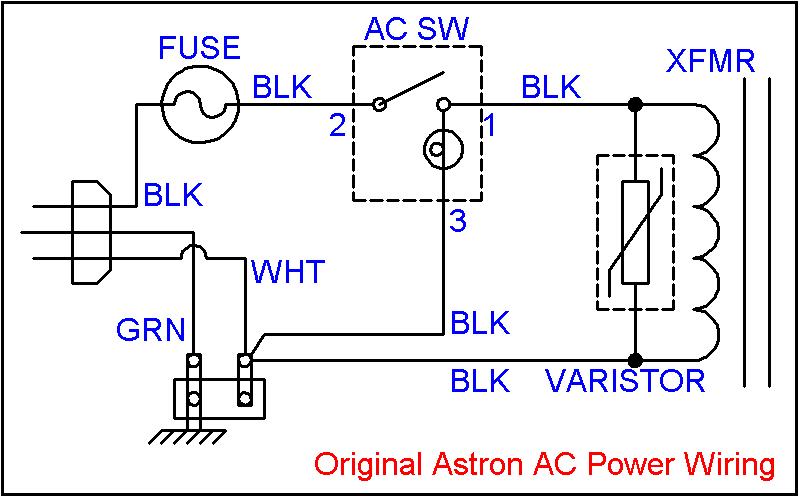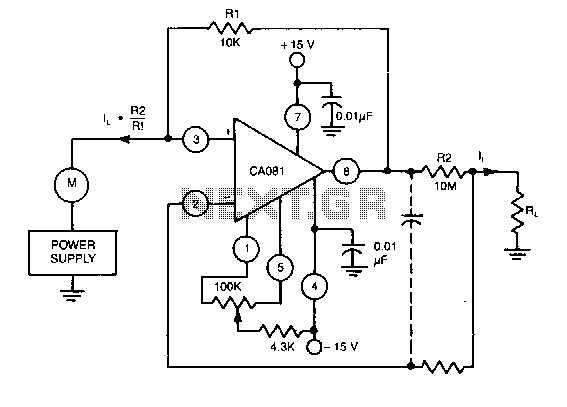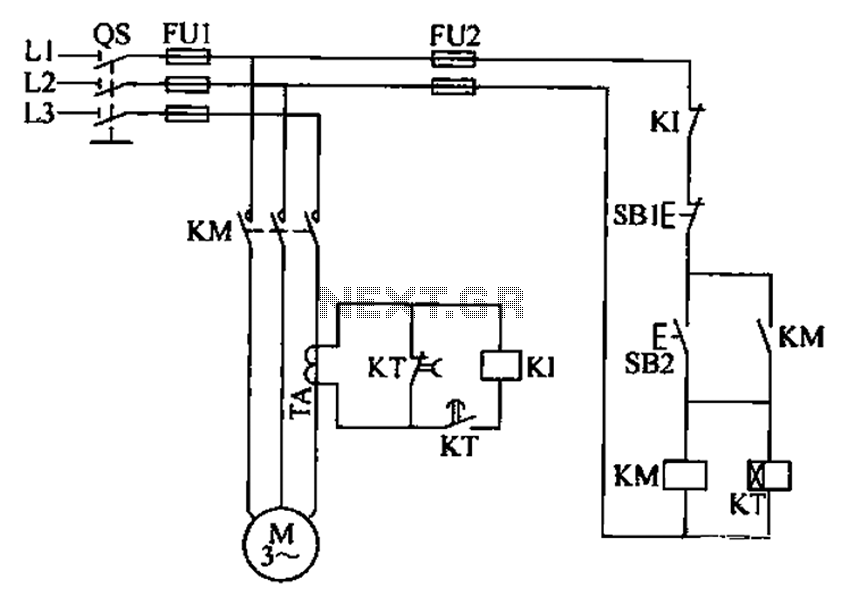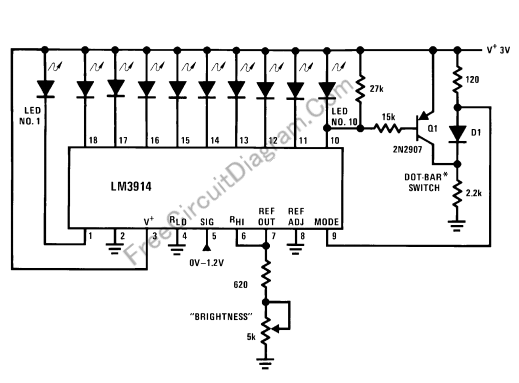
Ac Current Indicator
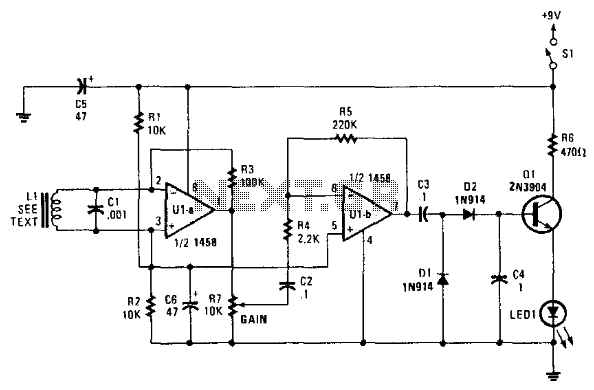
This circuit utilizes a dual operational amplifier to drive a rectifier and emitter-follower configuration, which indicates AC current on an LED. The inductor L1 is formed by a winding of a audio transformer, created with a pick-up coil consisting of 100 to 200 turns of #28 gauge wire wound around a 2-inch diameter core. The circuit is capable of tracing AC lines behind walls and detecting AC current flow.
The described circuit employs a dual op-amp integrated circuit, which serves as the core component for signal amplification and processing. The first op-amp is configured as a rectifier, converting the alternating current (AC) signal into a direct current (DC) signal. This is typically achieved using a precision rectifier configuration, which allows for accurate measurement of the AC signal even at low levels.
The output from the rectifier is then fed into an emitter-follower stage, which provides a high input impedance and a low output impedance. This configuration ensures that the LED indicator receives sufficient current to illuminate without significantly loading the rectifier output. The LED serves as a visual indicator of AC current presence, lighting up in response to the detected signal.
The inductor L1 is crucial for the circuit's operation. By using a pick-up coil with 100 to 200 turns of #28 gauge wire, the circuit can effectively sense the AC magnetic field generated by current-carrying conductors. The choice of a 2-inch diameter core allows for a balance between sensitivity and physical size, making it suitable for applications such as tracing AC lines behind walls.
This circuit can be particularly useful for electricians and technicians, enabling them to safely detect and trace AC current flow without direct electrical contact. The design emphasizes simplicity and effectiveness, ensuring that users can identify AC lines and monitor current flow in various environments. Using a dual op amp driving a rectifier and emitter-follower, this circuit indicates ac current on an LED. Ll is an au dio transformer winding using a pick-up coil, or 100 to 200 turns of #28 gauge wire 2" in diameter, etc. The circuit can trace ac lines behind walls, etc. or detect ac current flow.
The described circuit employs a dual op-amp integrated circuit, which serves as the core component for signal amplification and processing. The first op-amp is configured as a rectifier, converting the alternating current (AC) signal into a direct current (DC) signal. This is typically achieved using a precision rectifier configuration, which allows for accurate measurement of the AC signal even at low levels.
The output from the rectifier is then fed into an emitter-follower stage, which provides a high input impedance and a low output impedance. This configuration ensures that the LED indicator receives sufficient current to illuminate without significantly loading the rectifier output. The LED serves as a visual indicator of AC current presence, lighting up in response to the detected signal.
The inductor L1 is crucial for the circuit's operation. By using a pick-up coil with 100 to 200 turns of #28 gauge wire, the circuit can effectively sense the AC magnetic field generated by current-carrying conductors. The choice of a 2-inch diameter core allows for a balance between sensitivity and physical size, making it suitable for applications such as tracing AC lines behind walls.
This circuit can be particularly useful for electricians and technicians, enabling them to safely detect and trace AC current flow without direct electrical contact. The design emphasizes simplicity and effectiveness, ensuring that users can identify AC lines and monitor current flow in various environments. Using a dual op amp driving a rectifier and emitter-follower, this circuit indicates ac current on an LED. Ll is an au dio transformer winding using a pick-up coil, or 100 to 200 turns of #28 gauge wire 2" in diameter, etc. The circuit can trace ac lines behind walls, etc. or detect ac current flow.
